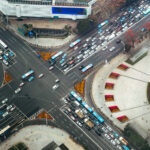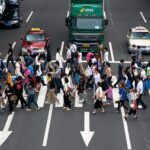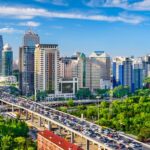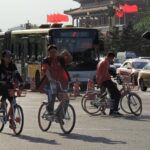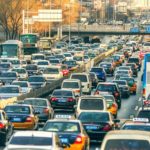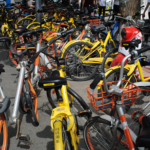Posts tagged with 'WRI China'
Getting more zero-emission trucks on the road is an important transportation shift that is needed to reduce air pollution, protect public health and curb climate-harming emissions. But transforming the entire trucking industry is a challenging feat that will require the ...

With growing urban populations and increases in cars, trucks and buses, cities are poised to experience more harmful pollution threatening people’s health and livelihoods. But some cities around the world are turning to an emerging solution called zero-emission zones (ZEZs). These are designated ...

Like many parts of Africa, motorcycles are the most popular form of transportation among Rwanda’s 13.3 million people. Whether they’re commuting to work or school, transporting jugs of water from the local taps or just running everyday errands, people on ...

The momentum towards low-carbon and sustainable transport is growing globally, but the sector still lags behind many others and each country faces a unique path to travel. Political landscapes, regulations, industry interests, market set-ups, financial resources and social considerations all ...

China’s transport CO2 emissions accounted for 11% of the world’s transport greenhouse gas (GHG) emissions, following only the United States (21%), according to data from Climate Watch. And these numbers have been growing rapidly: The average annual growth rate of China’s transport ...

Abating China’s transport sector greenhouse gas emissions, which accounted for about 11% of the world’s transport emissions in 2018, is key to meeting both national and global climate goals. In 2021, China updated its Nationally Determined Contributions (NDCs), outlining ambitious ...

The world’s ability to overcome the climate change challenge hinges, in part, on what happens on China’s roads. China’s cars, buses, trucks, shipping and other transport generated 828 million tonnes of greenhouse gases in 2014. That’s almost the equivalent of the EU ...

The transport sector is the third largest source of GHG emissions in China, following the power and industry sectors. Heavy-duty truck transportation accounts for 41% of the country’s freight demand (in tonne-kilometers) and 84% and 40% of motor vehicles’ NOx ...

In densely urbanized Hong Kong, transport is the second largest source of greenhouse gas emissions, at 18%. Vehicle traffic is also a major source of toxic air pollutants like NOx, volatile organic compounds and carbon monoxide, accounting for 18%, 21% ...

City dwellers worldwide are shifting lifestyles as a result of the COVID-19 pandemic, especially in terms of transport. As cities begin to re-open, urban planners and designers are rethinking urban and transport infrastructure to adapt to a post-pandemic world. When ...

Ghost-like cities with deserted metro cars and empty buses have been a vivid manifestation of how COVID-19 has affected society worldwide. As elsewhere, public transport ridership in Chinese cities dipped precipitously during the early days of the pandemic. But as ...

Beijing is one of most congested cities in the world, with over 6 million cars on its roads. In 2017, drivers spent on average just under three hours in traffic each weekday. Data from the navigation app AutoNavi shows Beijing ...

Just three years ago, dockless bike sharing was operating at a small, university-scale in China. By the end of 2017, there were more than 20 million dockless bikes in the country, generating more than $3 billion in investment. Xinhua, the ...

To curb car congestion and boost the economy, China is embracing trains at an unprecedented rate. In June 2017, the government approved 5,770 kilometers of new urban rail systems, almost 17 times the total amount of track in all of ...

Dozens of “dockless” bike-sharing startups have emerged in the past few years, offering apps where riders can locate bicycles, unlock them and leave them wherever their ride ends. The result in some Chinese cities has been more than a million ...














